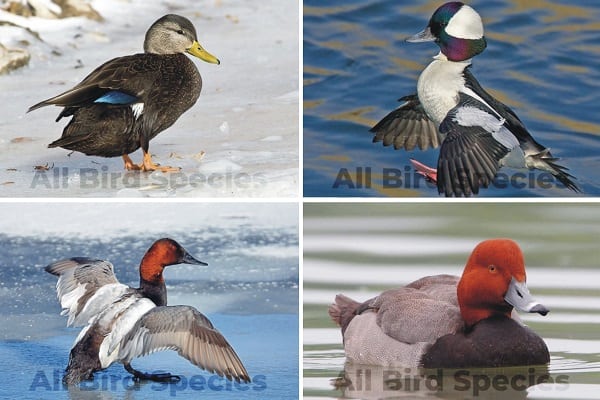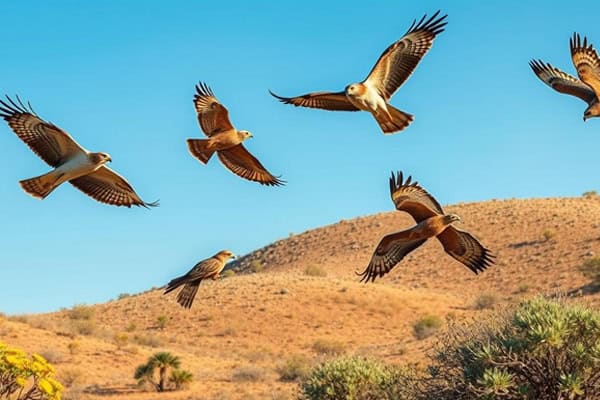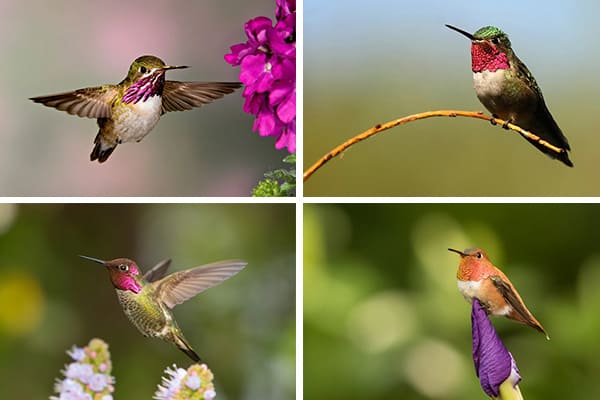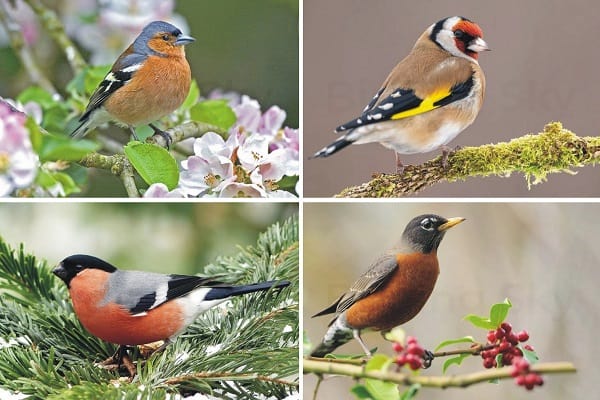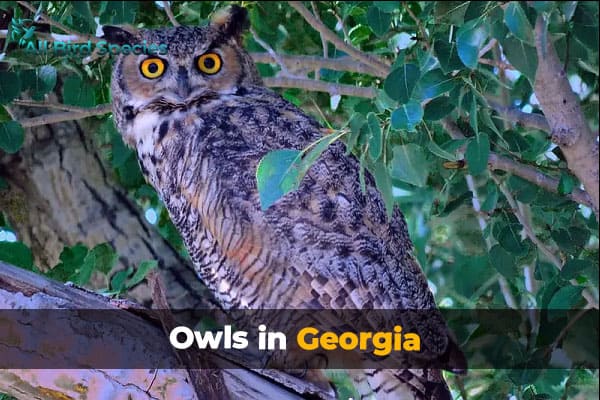12 Types of Black Ducks in Michigan (ID Guide With Photos)
Michigan waterways are a treasure trove of black ducks, each species with its own unique charm. There’s much to discover, from the elegant American Black Duck to the vibrant Mallard. You’ll also find stunning Wood Ducks and striking American Wigeons among them.
Don’t forget about the lesser-known gems like the Ring-necked Duck or Bufflehead. Whether you’re an avid birdwatcher or just starting out, this guide will help you identify these beautiful birds and deepen your appreciation for Michigan’s diverse wildlife. Get ready to explore!
Common Black Ducks of Michigan (12 Species With Photos)
1. American Black Duck
The American Black Duck is a stunning sight for bird watchers in Michigan. It sports rich chocolate-brown plumage with subtle hints of iridescence on its wings. Characterized by its long body and rounded head, this duck often gets confused with the female Mallard due to their similar colouring.

These ducks prefer wetlands, rivers, and marshes where they can dabble for food. Look for them during migration seasons or even year-round in suitable habitats. Their quack is distinctive and adds charm to any outing in nature!
2. Mallard
The Mallard is perhaps the most recognizable duck in Michigan. Its vibrant green head, bright yellow bill, and distinctive white neck ring make it a stunning sight on any waterway. Males often flaunt their colorful plumage while females sport a more muted brown tone that helps them blend into their surroundings.

These adaptable birds can be found in various habitats—ponds, lakes, rivers—and even urban areas! Their quacking is familiar to many Michiganders. Look for them dabbling near the surface or gliding gracefully across calm waters during your next outdoor adventure.
3. Wood Duck
The Wood Duck is truly one of Michigan’s most stunning waterfowl. Its iridescent plumage and striking facial patterns make it hard to miss these beauties in their natural habitat. Males sport vivid colours, while females are more subdued yet equally charming with their delicate markings.
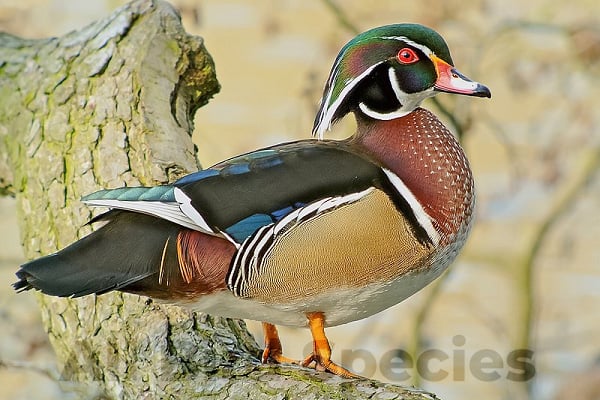
These ducks prefer wooded swamps and marshes near ponds or lakes. They’re often seen perched on tree branches or diving into the water for food. Spotting a Wood Duck is always a delight for birdwatchers and nature lovers alike!
4. American Wigeon
The American Wigeon is a striking duck often spotted in Michigan’s wetlands. This medium-sized bird features a distinctive green stripe on its head, which males flaunt during courtship displays. Their soft, whistling calls add to their charm as they glide across the water.
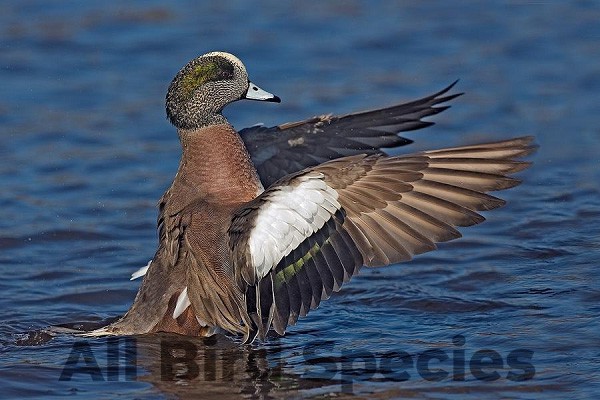
When it comes to feeding, American Wigeons are quite unique. They love grazing on grass and aquatic plants, making them different from many other ducks that prefer diving for food. If you’re lucky enough to spot one, take a moment to appreciate its vibrant colours and playful demeanour!
5. Gadwall
The Gadwall is a subtle beauty among black ducks in Michigan. With its sleek grey body and distinctive white wing patches, this dabbling duck often goes unnoticed amidst flashier species. Males sport a striking black rear end, while females are more muted with warm brown tones.
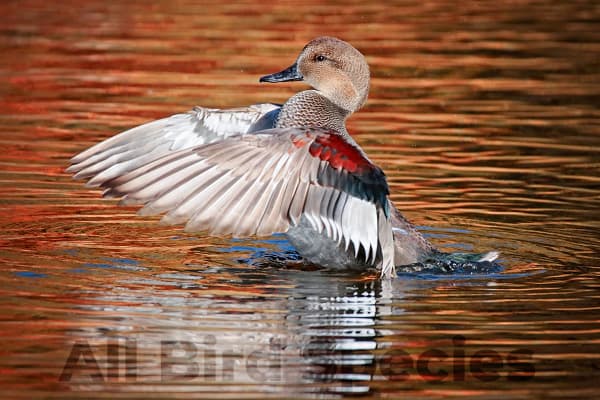
These ducks enjoy shallow waters, foraging for seeds and aquatic plants. Look for them gliding peacefully across lakes or river edges during migration seasons. Their quiet demeanour distinguishes them from the boisterous mallards that often steal the spotlight!
6. Ring-necked Duck
The Ring-necked Duck is a striking bird with its deep, glossy black head and distinctive white ring near the bill. Males are particularly eye-catching, with their vibrant plumage against the calm waters of Michigan’s lakes and ponds.

During migration periods, you’ll spot them diving for food or gracefully bobbing on the surface. These ducks thrive in freshwater habitats, making wetlands their preferred playground. Watch for their unique shape as they paddle by; it’s sure to capture your attention!
7. Lesser Scaup
The Lesser Scaup is a striking duck that you might spot gliding across Michigan’s waters. With its distinctive rounded head and bright yellow eyes, this bird often gets confused with its larger cousin, the Greater Scaup. Males display a glossy black head contrasting with their white body, while females are more subdued in color.

These ducks love open water and can be seen diving for food like aquatic plants and small fish. Look for them during migration seasons in lakes and ponds throughout the state. Their lively antics make them a favourite among birdwatchers!
8. Greater Scaup
The Greater Scaup is a striking black duck that often catches the eye of bird watchers in Michigan. With its distinctive rounded head and bright yellow eyes, it stands out among other waterfowl. Males boast a glossy greenish-black head, while females are more subdued with brown hues.

During migration, these ducks prefer to inhabit large lakes and coastal waters. You might spot them diving for food below the surface or bobbing along in groups. Their energetic antics make them a delight to observe as they navigate their watery playgrounds.
9. Bufflehead
Buffleheads are small, striking ducks known for their distinctive white and black plumage. Males sport an eye-catching glossy green head with a large white patch, making them easy to identify when they take flight. These little divers love to forage in lakes and ponds.

You can often spot them bobbing on the water as they hunt for small aquatic creatures like insects and crustaceans. Their playful nature adds a delightful charm to any birdwatching experience. If you’re out near Michigan’s waterways in winter, keep your eyes peeled for these charming little ducks!
10. Hooded Merganser
The Hooded Merganser is a striking duck that catches the eye with its unique crest. Males are stunning, featuring a bold black-and-white head and a distinctive fan-shaped crown. When they’re swimming, their vibrant colors really pop against the water.

These ducks prefer wooded wetlands and quiet ponds for breeding. During migration, look for them in marshes or rivers where they hunt for fish and small invertebrates. Their graceful movements make them a joy to observe as they dive and resurface effortlessly. If you’re birdwatching in Michigan, watch for these elegant creatures!
11. Common Merganser
The Common Merganser is a striking duck easily recognized by its long, slender body and sharp bill. Males sport a glossy green head, while females have a distinctive rusty red-brown plumage. These ducks often dive for fish in Michigan’s lakes and rivers.
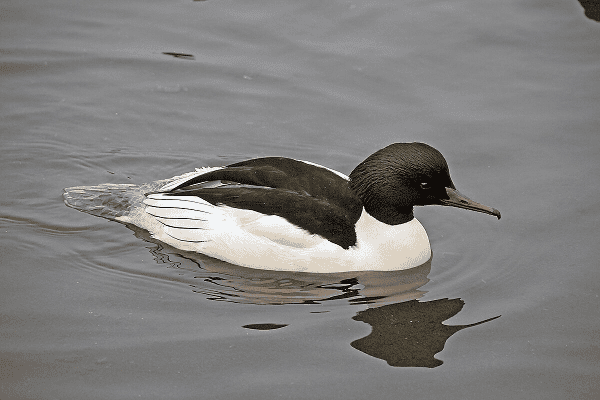
Their hunting style is fascinating to watch as they chase prey underwater with agility. You can find them in both freshwater and coastal areas throughout the state. Keep an eye out for these beautiful birds during your outdoor adventures; their presence adds excitement to any birdwatching experience!
12. Common Goldeneye
The Common Goldeneye is a striking black duck that catches the eye with its distinctive round head and bright yellow eye. Males are particularly showy, showcasing their dark green heads contrasted by crisp white bodies. Their unique appearance makes them stand out among other waterfowl.
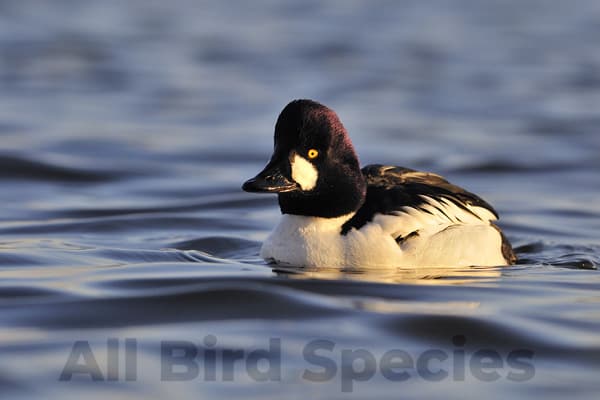
These ducks can be spotted diving for fish in lakes and rivers across Michigan during winter. Watch for them bobbing up after a dive or gliding gracefully on calm waters. Their playful behaviour adds charm to any outing, making them a favourite among birdwatchers and nature enthusiasts.
Where to find Black Ducks in Michigan
If you’re eager to spot black ducks in Michigan, head to the wetlands and marshes across the state. Places like Shiawassee National Wildlife Refuge and Saginaw Bay are prime locations where these lovely birds often gather.
Don’t forget about coastal areas along Lake Michigan. The diverse habitats provide great opportunities for birdwatching. Early morning or late afternoon is typically best for sightings. Grab your binoculars, find a quiet spot, and enjoy the beauty of nature as you search for these fascinating waterfowl!
Read Our More Birds Articles~
- Types Of Blue Birds in Michigan
- 4 Types of Cranes in Michigan
- 18 Types of White Birds In Michigan (ID Guide With Photos)
- 11 Types Of Red Birds in Michigan (With Pictures)
- Black and White Birds in Michigan
Bottom Line
Exploring the diverse world of black ducks in Michigan is a rewarding experience for birdwatchers and nature enthusiasts alike. From the familiar American Black Duck to the striking Common Goldeneye, each species has its own unique characteristics and behaviours. As you venture into wetlands, lakes, and rivers across the state, keep your eyes peeled for these fascinating birds.
Remember that different regions will offer distinct opportunities to spot various types of black ducks year-round. Whether you’re an experienced birder or just starting out, take some time to observe their beauty and habits. Embrace the adventure that awaits you in Michigan’s rich avian habitats! Happy birding!

